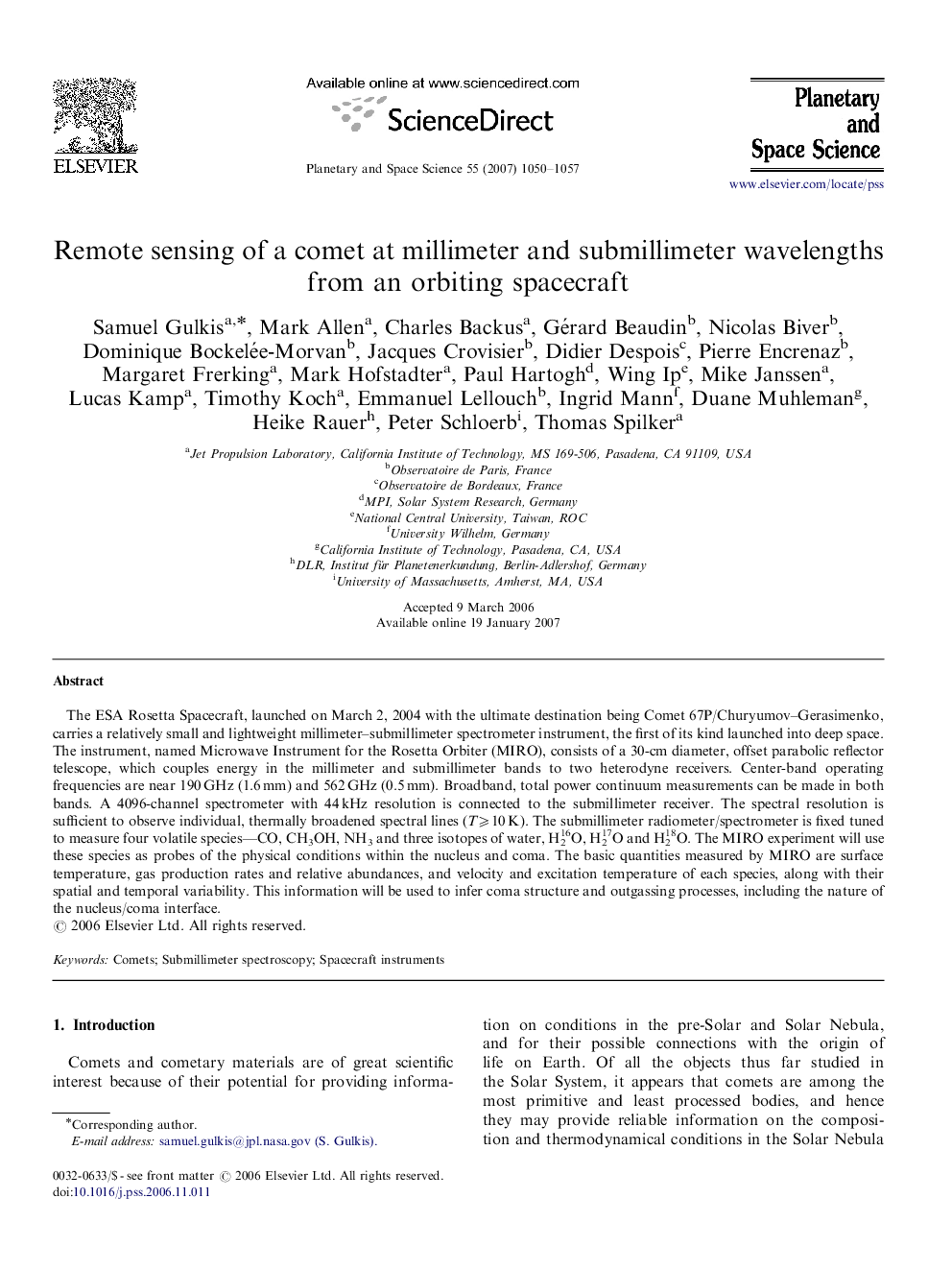| Article ID | Journal | Published Year | Pages | File Type |
|---|---|---|---|---|
| 1782586 | Planetary and Space Science | 2007 | 8 Pages |
The ESA Rosetta Spacecraft, launched on March 2, 2004 with the ultimate destination being Comet 67P/Churyumov–Gerasimenko, carries a relatively small and lightweight millimeter–submillimeter spectrometer instrument, the first of its kind launched into deep space. The instrument, named Microwave Instrument for the Rosetta Orbiter (MIRO), consists of a 30-cm diameter, offset parabolic reflector telescope, which couples energy in the millimeter and submillimeter bands to two heterodyne receivers. Center-band operating frequencies are near 190 GHz (1.6 mm) and 562 GHz (0.5 mm). Broadband, total power continuum measurements can be made in both bands. A 4096-channel spectrometer with 44 kHz resolution is connected to the submillimeter receiver. The spectral resolution is sufficient to observe individual, thermally broadened spectral lines (T⩾10 K). The submillimeter radiometer/spectrometer is fixed tuned to measure four volatile species—CO, CH3OH, NH3 and three isotopes of water, H216O, H217O and H218O. The MIRO experiment will use these species as probes of the physical conditions within the nucleus and coma. The basic quantities measured by MIRO are surface temperature, gas production rates and relative abundances, and velocity and excitation temperature of each species, along with their spatial and temporal variability. This information will be used to infer coma structure and outgassing processes, including the nature of the nucleus/coma interface.
